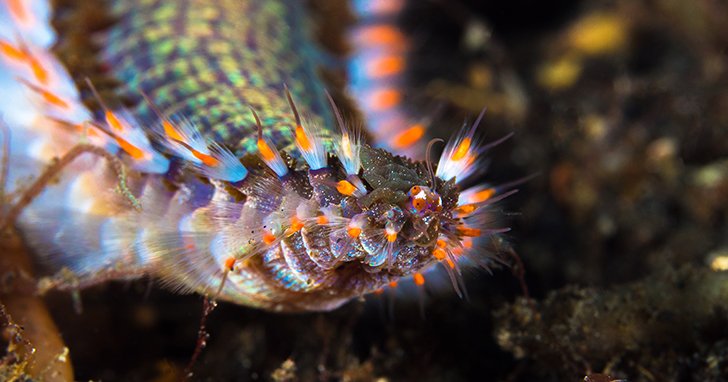
Bristle worms aren’t the most beloved of tank inhabitants. While they play a role in keeping your aquarium clean, an unexpected surge in their numbers can be alarming. So, why do they suddenly appear and multiply? Let’s explore the reasons behind this phenomenon, and I promise to keep it simple and relatable.
Understanding Bristle Worms
Bristle worms are marine polychaete worms, which means they have segmented bodies and bristles (setae) along their sides. They can vary in color and can grow quite large, depending on the species. You might spot them during feeding time or when you are doing your regular tank maintenance. They often work behind the scenes, munching on detritus, leftover food, and even decaying organic matter.
But here’s the kicker: these little creatures can reproduce rapidly. If conditions in your tank become suitable, you might find yourself with a bristle worm population explosion. They’re kind of like those uninvited guests who just keep coming back for more!
Why Do Bristle Worms Multiply?
You might be wondering why bristle worms would suddenly take over your tank overnight. Several factors contribute to their rapid multiplication. Let’s break it down.
**1. Nutrient Overload:**
Bristle worms thrive on decaying matter and leftover food. If you’ve been overfeeding your fish or not performing regular tank clean-ups, you’re essentially rolling out the red carpet for these critters. The more food available, the more likely they are to breed. It’s like hosting a never-ending buffet—who wouldn’t want to invite their friends?
**2. Stable Water Conditions:**
Bristle worms prefer stable conditions. If your tank has good water quality with balanced pH, salinity, and temperature, it creates the perfect environment for them to flourish. Think of it like putting up a “vacancy” sign when you maintain ideal living conditions. Stability allows populations to grow without stress.
**3. Low Predator Presence:**
In many tanks, bristle worms face few predators. If you don’t have fish or invertebrates that naturally keep their numbers in check, they can multiply unchecked. Picture a pizza buffet with no one around to eat the slices—before long, you’ve got a mountain of leftovers.
Signs of Bristle Worm Infestation
Recognizing the signs of a bristle worm multiplication can help you tackle the issue before it gets out of hand. Here are a few things to look out for:
**1. Visible Presence:**
The most obvious sign is seeing bristle worms crawling around your tank. They tend to come out at night, so if you’re a night owl, you might catch them in action. Sometimes, they can be spotted on rocks, substrate, and even tank walls.
**2. Increased Detritus:**
If you notice more detritus or leftover food piling up, bristle worms could be part of the problem. They can contribute to an imbalance in your tank’s ecosystem, especially if they’re consuming organic matter at a rapid pace.
**3. Altered Water Quality:**
A sudden spike in bristle worm population can lead to changes in water quality. As they consume more organic matter and produce waste, it can lead to increased nutrient levels that affect the overall health of your tank.
How to Control Bristle Worm Populations
If you find yourself overwhelmed by bristle worms, don’t fret! There are various strategies you can use to manage their population effectively. Here are some steps you can take:
**1. Reduce Feeding:**
Start by cutting back on your fish’s food. It’s tempting to see those little faces looking up at you, but a smaller feeding schedule can help decrease the available food for the worms. Think of it as going on a diet for your tank—less food means fewer worms.
**2. Regular Clean-ups:**
Routine maintenance is key. **Vacuum** your substrate, perform regular water changes, and remove any uneaten food. Keeping your tank clean prevents an abundance of nutrients that encourage bristle worm growth.
**3. Introduce Predators:**
Consider adding natural predators that will help keep the bristle worm population in check. Certain fish, like **wrasses** or **triggerfish**, love to munch on bristle worms. Just make sure to research species compatibility before introducing new tank mates.
Are Bristle Worms Harmful?
You might be concerned about whether these creatures are harmful. The good news is that bristle worms are generally harmless to your fish and plants. They help break down organic matter and maintain a healthy tank environment. However, their overpopulation can lead to problems, like increased waste and compromised water quality.
**Handling Bristle Worms:**
While bristle worms are mostly safe, their bristles can irritate your skin if you handle them. Always use gloves when working in your tank. If you do get stung, it’s not the end of the world! Rinse the area with water and apply a cold compress to ease the discomfort.
So, if you find your aquarium suddenly swarming with bristle worms, don’t panic! Understanding the reasons behind their rapid multiplication is key to managing and controlling their presence. By keeping your tank clean, feeding appropriately, and potentially introducing natural predators, you can keep your aquarium ecosystem balanced and thriving.
Remember, every tank has its little quirks, and bristle worms are just part of the unique journey of maintaining an aquatic haven. Embrace the fun of caring for your underwater world, and soon enough, you’ll find that bristle worms can coexist peacefully in your tank!
